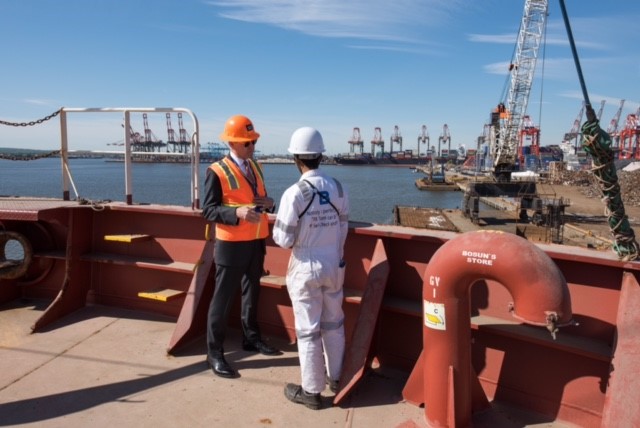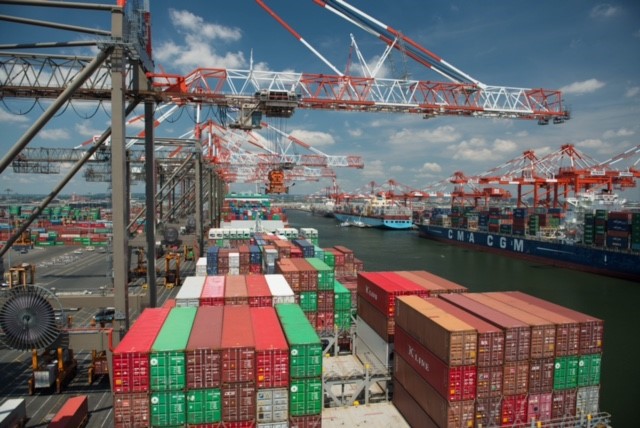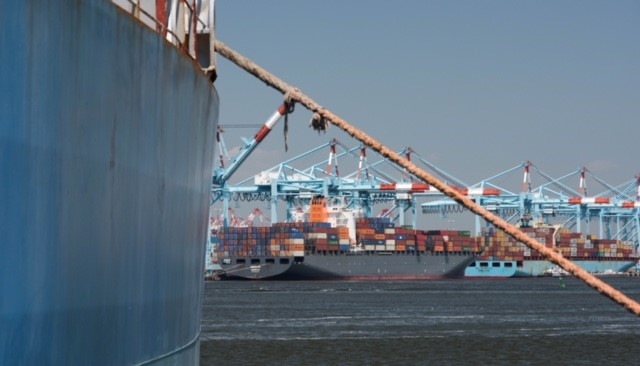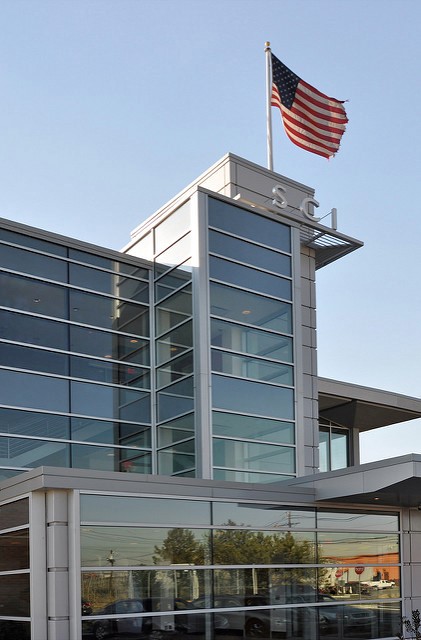- Home
- Events
- Events Calendar
- Annual Events
- Newark St. Patrick's Day
- Brazilian Day Newark Festival
- Puerto Rican Day Parade
- Dodge Poetry Festival
- Basilica Christmas Carol Sing
- Cherry Blossom Festival
- Newark Arts Festival
- Portugal Day Festival
- Lincoln Park Music Festival
- Newark International Film Festival
- Seasonal Festivals
- Newark First Fridays
- Horizon Foundation Sounds of The City
- Newark Pride!
- AfroBeat Festival
- Newark's Latin Festival
- Jazz in the Garden
- Halsey Fest Street Fair
- TD James Moody Jazz Festival
- Newark Arts Festival
- Performing Arts
- Submit an Event
- Home
- Restaurants
- Restaurants by Cuisine
- American
- Asian
- Italian
- Portuguese & Brazilian
- Kosher
- Middle Eastern
- Soul Food
- Spanish & Latin
- Eat Local Guide
- Cheap Eats
- Coffee Lovers
- Bakeries & Cafes
- Food Trucks
- Top Food Trucks
- Bars & Pubs
- Wine Bars
- Irish Pubs
- Best Craft Brews
- Drinks With A View
- Best Sangria In Town
- Best Sports Restaurants & Bars
- Newark's Hottest Happy Hours
- Best Places for Happy Hour in Newark
- Foodie Guides
- New Restaurants
- Best Brunch Spots
- Best BBQ in Newark
- Best Burgers
- Best Brazilian Food
- Italian Hot Dogs
- Ice Cream & Treats
- Newark Sushi
- Best Pizza Spots
- Best Ramen
- Late Night Eats
- Best Sandwiches
- Best Soul Food
- Newark's Irish Tradition
- A Newark-Themed Thanksgiving at Home
- Delis & Sammies
- Sunset Dining in Newark
- Restaurants Near NJPAC
- Home
- Things To Do
- Top Attractions In Newark
- Free Things to Do
- Family Fun
- Newark Black Owned Business Guide
- Nightlife
- Nightlife Ideas
- Flamenco Dancing
- Newark Cocktail Challenge
- All Points West Distillery
- LGBTQ Friendly
- Tours & Itineraries
- Newark Walks App
- African American
- Boat Tours
- A Day in Newark
- Philip Roth's Newark
- Pre & Post Game Fun
- Ultimate Girl's Day Out
- Guys Night Out
- Ironbound
- Taste the Ironbound
- Fit in the Ironbound
- Ironbound, Date Night
- Shopping
- Holiday Shopping
- Newark Fashion
- Women's Fashion
- Men's Fashion
- Hidden Jewels
- Shopping In The Ironbound
- Fashion 3.0
- Newark Fashion Style
- Arts & History
- Museums & Galleries
- GRAMMY Museum Experience Prudential Center
- Index Art Center/The Arts & Artifacts
- Newark Museum of Art
- Jazz
- NC350
- NJSO
- Open Doors
- Poetry
- Happenings
- Newark History
- Architecture
- Chinatown
- Newark's Ark
- Historic Places of Worship
- Indie Arts Scene
- Best Building Bits
- Newark Print Shop
- Newark Arts Festival
- Newark Sculptures
- Newark Arts Family
- Fern and Fossils
- Portuguese Passion!
- America the Beautiful
- Recreation & Sports
- A Walkable Newark
- Parks
- Pet Friendly Places
- Branch Brook Park
- Washington Park
- Indoor Activities
- Newark Fitness
- Ironbound Fitness
- Billiards In Newark
- Music & Entertainment
- Artist On Record
- Interviews
- Gary Walker Q & A
- Savion Glover Q & A
- Michael B. Jordan WBLS
- Ras In 60
- Dancing
- Indie Films
- Live Jazz in Newark
- Newark Poetry
- Virtual Newark
- Fathers Day in Newark
- Home
- Plan Your Trip
- Welcome to Newark
- Getting to Newark
- Airport
- Bus
- Train
- Car Rentals
- Light Rail
- Subway
- Taxis & Limos
- Parking Guide
- Getting Around Newark
- Accessibility
- International Travelers
- Blog
- Partner Listings
- Submit a Listing
- Visitors Guide
- Nearby
- Essex County
- Jersey Shore & A.C.
- Visiting NYC
- Cruise Port
- Live Traffic
Looking After Cargo Ships and Mariners
Salt. Cooking oil. Belgian blocks. Scrap metal. Acres of autos. Sky-scraping stacks of containers. What do all these disparate items have in common? They arrive or depart the United States through Port Newark, on Newark Bay. You can see the labyrinth of terminals, cranes and ships from the New Jersey Turnpike, or from a plane circling over Newark Liberty International Airport.
Salt comes from Venezuela and Chile, for use in winter on New Jersey roads; Belgian blocks come from Africa. Cooking oil comes from various countries and goes into vast steel cylinders, which are visited by rabbis to kosher it prior to distribution. Autos come mainly from Japan and Korea. The containers come from all over.

What about exports? “Mainly raw material,” said Sam Ruda, deputy director of the Port Department, Port Authority of New York and New Jersey, which oversees the waterfront acreage under a long-term lease from the City of Newark. Paper, for instance, goes to China, where it’s turned into resins and plastic, then shipped back to the United States -- the global economy at work.
“The profile of imported goods changes over the years,” said Ruda. “Currently, number one is furniture, followed by beverages, then apparel.” Beverages? “Think wine, Scotch, brandy, rum, and beer. Coming up on the list are food products and auto parts.”
Four container terminals are located in Port Newark and two are in New York -- with a combined 2016 annual volume of approximately 6,251,953 TEU (a “TEU” stands for a 20-foot equivalent unit and is an industry-wide volume measure used to describe the capacity of container ships and terminals) -- along with more than 600,000 automobiles -- make the Port of New York and New Jersey the largest on the East Coast, third largest in the United States and 20th worldwide.
According to Ruda, 80-85% of imports go onto trucks which, with immediate access to the Turnpike and interstates, can reach 44.7 million people in four hours and 13 million in just one hour. Railroad tracks broaden the reach into the heartland. In July, the first Panamax (largest container ship) glided into Port Newark under the newly raised Bayonne Bridge. According to the Journal of Commerce, a major expansion to handle the mega-ships will double the port’s container capacity from about one million a year to 2.4 million by 2020.

While you can’t tour the terminals, you can watch the activities from panoramic windows in the three-story Seamen’s Church Institute’s International Seafarers’ Center (SCI) at 118 Export Street in the heart of the port.. A big brass ship’s bell from the SS Normandie will welcome you to the lobby, adorned with a hanging screen of blue-green glass waves evoking the sea. Throughout the building are displays of art and artifacts depicting life at sea through history. An imposing ship’s figurehead of Sir Galahad occupies a place of honor, though no one knows his origins.

A marble baptismal font from the Church of St. Mark’s in the Bowery dates from the original floating Seamen’s Church, built in 1843 on a barge in New York Harbor. The church had a steeple and stained glass windows and served 200 to 300 seamen at any given time. It continuously expanded to various locations on Manhattan’s waterfront. Today’s SCI serves more than a million mariners of all backgrounds and religions who arrive annually at Port Newark, where it relocated after selling its last New York headquarters in 2010. “When the bulk of marine transport moved from New York to New Jersey, we decided we should go where the sailors were,” said Stephen Lyman, SCI director. “It was a good move.”
SCI has always provided not only spiritual solace, but also whatever else seafarers needed in port -- sleeping accommodations, dining, banking and legal services, among others. Changing times and mariners’ needs have altered SCI’s focus. Now speedy unloading and loading technology no longer requires extended mariner layovers. Often ships come in and go out within hours. Though chaplains board every ship that comes in, offering spiritual solace on request, SCI now provides a gym, health care (in collaboration with Rutgers and Yale Universities), internet, email, WIFI and certification courses in computer navigation.

“SCI is the human factor amidst the madness of the port,” explained Lyman. “We serve as a land base/community center for mariners arriving from all over the world, after months at sea, out of touch with home and family.
“We still provide valuable services to mariners in port,” Lyman added. “Possibly the most requested is a shuttle to nearby Jersey Gardens and Walmart, where mariners buy goods to take back home. It’s sort of ironic, isn’t it? They bring the stuff into the port, unload it, then go buy it back.”
SCI encourages visitors to tour the center. Lyman is happy to share his knowledge and many stories he has heard from the seafarers. To schedule a tour or get more information, contact portprograms@seamenschurch.org.
Story By: Pegi Adam
Newark Bound Magazine: It's all about Newark. Flip through the glossy for an in-depth look at Newark's world-class attractions, endless dining options, upscale and discount shopping, accommodations, and more. NewarkBound explores and reports on the highlights, trends, celebrities, humor, history and perspective that reflect life in and around New Jersey's largest city.








